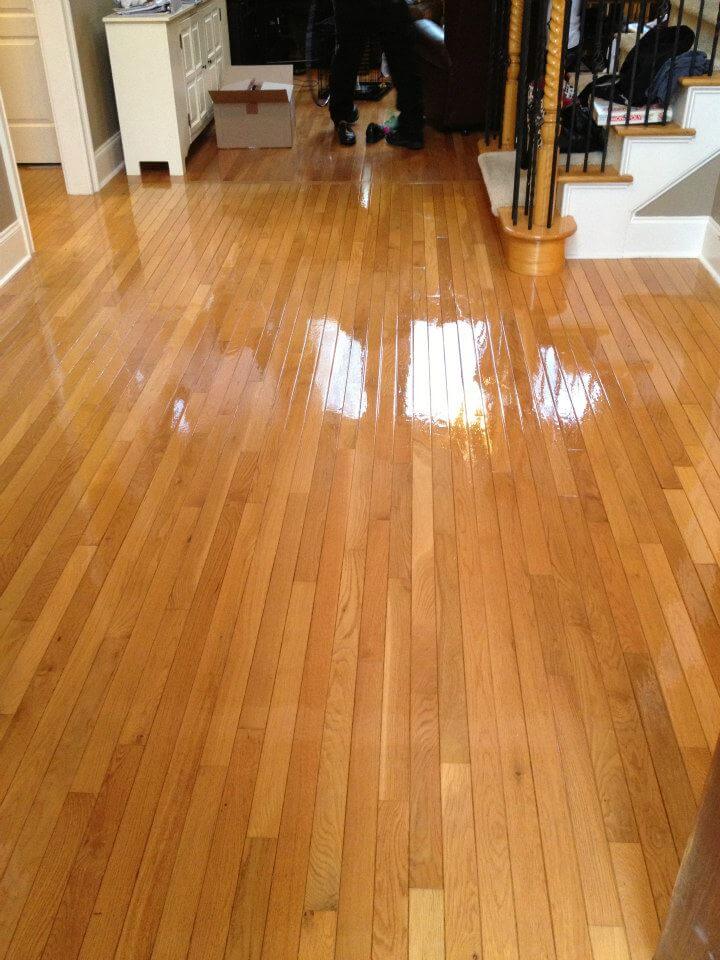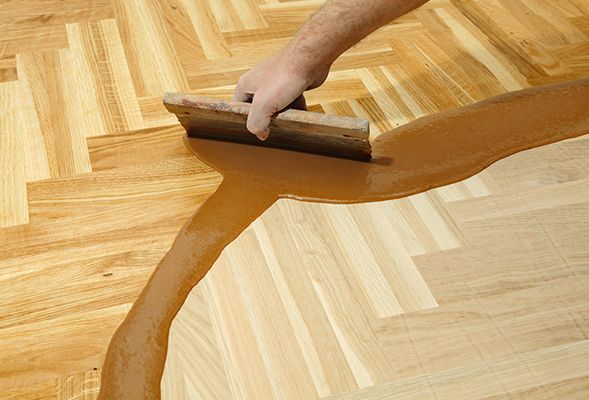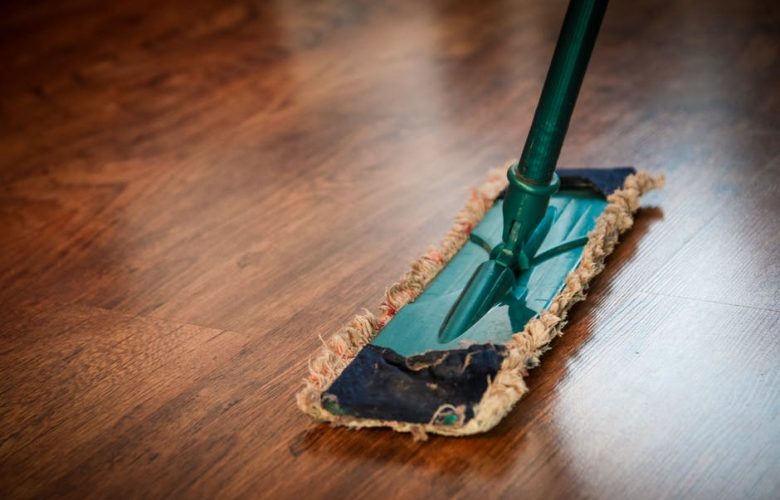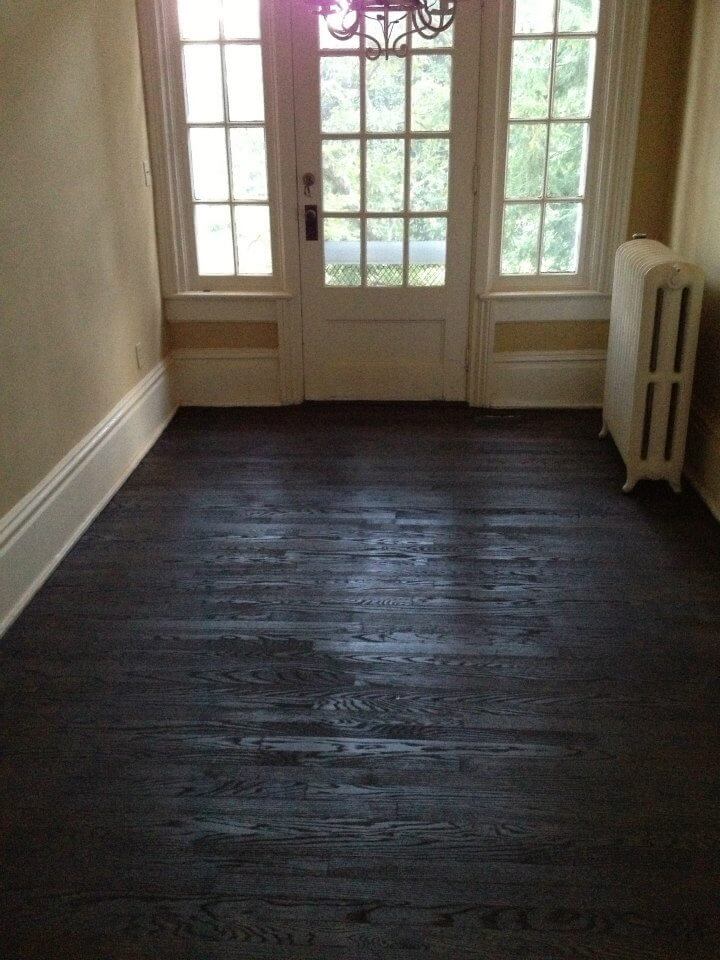Hardwood floors add timeless beauty and elegance to any home. However, to keep them looking their best, they require proper care and maintenance. One of the key aspects of maintaining hardwood floors is applying a maintenance coat. Today we will cover everything you need to know about hardwood floor maintenance coats, including their benefits, types, application process, and maintenance tips.
Benefits of Hardwood Floor Maintenance Coat
Enhanced Durability and Longevity
Applying a maintenance coat to your hardwood floors significantly enhances their durability and longevity. A maintenance coat acts as a protective layer, shielding the wood from scratches, dents, and other types of damage caused by daily wear and tear. This additional protection can prolong the life of your hardwood floors, keeping them looking new for many years.
The maintenance coat also helps to preserve the original finish of the floor. Over time, even well-maintained floors can start to lose their luster due to foot traffic, furniture movement, and exposure to sunlight. A maintenance coat restores the floor’s shine and vibrancy, making it look as good as new.
Improved Aesthetic Appeal
One of the main reasons homeowners choose hardwood floors is for their natural beauty and aesthetic appeal. A maintenance coat enhances this beauty by bringing out the rich color and grain patterns of the wood. Whether you have oak, maple, cherry, or another type of hardwood, a fresh maintenance coat can make your floors look stunning.
In addition to enhancing the appearance of the wood itself, a maintenance coat can also help to mask minor imperfections. Small scratches and scuffs that might otherwise be noticeable can be hidden by the new layer of finish, giving your floors a smooth and flawless look.
Easier Cleaning and Maintenance
A maintenance coat makes your hardwood floors easier to clean and maintain. The protective layer created by the coat prevents dirt, dust, and other debris from penetrating the wood, making it easier to keep the floors clean. Spills and stains are also less likely to seep into the wood, allowing you to wipe them away more easily.
With a maintenance coat, you can reduce the frequency and intensity of your cleaning routine. Regular sweeping and occasional damp mopping is usually sufficient to keep your floors looking their best. This not only saves you time and effort but also helps to prevent damage that can be caused by excessive cleaning.

Increased Resistance to Moisture
Moisture is one of the biggest enemies of hardwood floors. Exposure to water and humidity can cause the wood to warp, swell, and crack. A maintenance coat provides an additional barrier against moisture, helping to protect your floors from these damaging effects.
While a maintenance coat is not a substitute for proper moisture control measures, such as using a dehumidifier and promptly wiping up spills, it does offer an extra layer of protection. This is especially important in areas of your home that are more prone to moisture, such as kitchens and entryways.
Cost-Effective Preservation
Regularly applying a maintenance coat is a cost-effective way to preserve your hardwood floors. The cost of a maintenance coat is relatively low compared to the expense of sanding and refinishing the entire floor. By investing in regular maintenance coats, you can delay the need for more extensive and costly restoration work.
In the long run, maintaining your floors with periodic maintenance coats can save you money and extend the life of your investment. It is a proactive approach to floor care that helps to avoid more significant damage and the associated repair costs.
Eco-Friendly Option
Using a maintenance coat on your hardwood floors is an eco-friendly option. Many maintenance coats are made from water-based or low-VOC (volatile organic compound) formulas, which are better for the environment and safer for your home. These products release fewer harmful chemicals into the air, contributing to better indoor air quality.
Additionally, by extending the life of your hardwood floors, you reduce the need for new flooring materials. This helps to conserve natural resources and minimize the environmental impact of flooring production and installation.

Types of Hardwood Floor Maintenance Coats
Polyurethane Coatings
Polyurethane is one of the most popular types of maintenance coats for hardwood floors. It provides a durable and long-lasting finish that is resistant to scratches, stains, and moisture. There are two main types of polyurethane: oil-based and water-based.
Oil-based polyurethane offers a rich, amber color that deepens over time. It is highly durable and provides excellent protection for hardwood floors. However, it has a longer drying time and emits stronger fumes compared to water-based polyurethane. Water-based polyurethane, on the other hand, dries quickly and has a clear finish that does not yellow over time. It is also low in VOCs, making it a more environmentally friendly option.
Wax Coatings
Wax coatings have been used for centuries to protect and enhance the beauty of hardwood floors. They provide a warm, natural-looking finish that can be easily buffed to a high shine. Wax is particularly effective at hiding small scratches and scuffs, making it a popular choice for high-traffic areas.
There are two main types of wax coatings: paste wax and liquid wax. Paste wax is more durable and provides a thicker layer of protection, but it requires more effort to apply. Liquid wax is easier to apply but may need to be reapplied more frequently. Both types of wax coatings require regular maintenance to keep the floor looking its best.
Shellac Coatings
Shellac is a natural resin that provides a beautiful, glossy finish for hardwood floors. It is available in a range of colors, allowing you to customize the look of your floors. Shellac dries quickly and is relatively easy to apply, making it a convenient option for DIY projects.
However, shellac is not as durable as polyurethane or wax, and it can be easily damaged by water and alcohol. It is best suited for low-traffic areas or as a top coat over other types of finishes. Regular maintenance and reapplication are necessary to keep shellac-coated floors looking their best.

Penetrating Oil Coatings
Penetrating oil coatings, such as tung oil and linseed oil, penetrate deep into the wood to provide a natural-looking finish that enhances the grain and color of the hardwood. These oils harden within the wood fibers, providing a durable and protective layer that is resistant to scratches and stains.
Penetrating oil coatings are easy to apply and maintain, making them a popular choice for DIY enthusiasts. However, they do require regular reapplication to maintain their protective properties and appearance. Penetrating oils are an excellent choice for those who prefer a more natural and less glossy finish for their hardwood floors.
Acrylic Urethane Coatings
Acrylic urethane coatings combine the benefits of both acrylic and urethane to provide a durable, clear finish for hardwood floors. These coatings are highly resistant to scratches, stains, and moisture, making them ideal for high-traffic areas. Acrylic urethane dries quickly and emits fewer fumes than traditional polyurethane, making it a more convenient and environmentally friendly option.
This type of coating is available in both water-based and solvent-based formulas. Water-based acrylic urethane is low in VOCs and dries to a clear finish, while solvent-based acrylic urethane provides a slightly amber tint and is more durable. Both types of acrylic urethane coatings require regular maintenance to keep the floor looking its best.
Aluminum Oxide Coatings
Aluminum oxide coatings are one of the most durable and long-lasting options for hardwood floors. This type of coating is typically applied in multiple layers and cured with UV light to create an incredibly hard and resistant finish. Aluminum oxide coatings provide excellent protection against scratches, stains, and wear, making them ideal for high-traffic areas and commercial settings.
While aluminum oxide coatings are extremely durable, they are also more challenging to apply and may require professional installation. Additionally, they can be more expensive than other types of maintenance coats. However, the long-lasting protection they provide can make them a worthwhile investment for preserving the beauty and integrity of your hardwood floors.

Application Process for Hardwood Floor Maintenance Coat
Preparing the Floor
Before applying a maintenance coat, it is essential to prepare the floor properly. Start by thoroughly cleaning the floor to remove any dirt, dust, and debris. Use a vacuum or broom to remove loose particles, followed by a damp mop with a mild cleaning solution. Allow the floor to dry completely before proceeding.
Next, inspect the floor for any scratches, dents, or other damage that may need to be repaired. Sand down any rough or uneven areas using fine-grit sandpaper, and fill in any gaps or cracks with wood filler. Once the repairs are complete, sand the entire floor lightly to create a smooth and even surface for the maintenance coat.
Choosing the Right Applicator
The type of applicator you use for applying the maintenance coat can have a significant impact on the final result. For polyurethane and acrylic urethane coatings, a high-quality brush or foam applicator is recommended. These tools allow for precise application and help to prevent streaks and bubbles.
For wax and penetrating oil coatings, a clean, lint-free cloth or applicator pad is ideal. These materials allow you to work the product into the wood fibers and create an even, smooth finish. When applying shellac, use a natural bristle brush or a lambswool applicator for the best results.
Applying the Maintenance Coat
When applying the maintenance coat, it is essential to follow the manufacturer’s instructions for the specific product you are using. Start by applying a thin, even layer of the maintenance coat to a small section of the floor. Work in small sections to ensure that the product is evenly distributed and that there are no streaks or bubbles.
Allow the first coat to dry completely before applying additional coats. Depending on the product, you may need to apply two or three coats to achieve the desired level of protection and finish. Be sure to sand lightly between coats to create a smooth surface and improve adhesion.

Allowing for Proper Drying Time
Proper drying time is crucial for achieving a durable and long-lasting finish. The drying time will vary depending on the type of maintenance coat you are using and the environmental conditions in your home. Be sure to follow the manufacturer’s instructions for drying times and avoid walking on the floor or placing furniture on it until it is fully cured.
In general, water-based products dry more quickly than oil-based products. However, it is essential to allow each coat to dry thoroughly before applying additional layers. This will help to prevent issues such as bubbling, peeling, and poor adhesion.
Buffing and Polishing
Once the maintenance coat has dried and cured, buffing and polishing can enhance the final appearance of the floor. Use a clean, soft cloth or a buffing machine to buff the floor to a high shine. This will help to remove any remaining dust or particles and create a smooth, glossy finish.
For wax-coated floors, buffing is especially important to achieve the desired level of shine. Be sure to follow the manufacturer’s instructions for buffing and polishing to ensure the best results.
Final Inspection and Touch-Ups
After applying and buffing the maintenance coat, conduct a final inspection of the floor to ensure that it meets your expectations. Check for any areas that may need additional touch-ups or repairs. If necessary, apply a small amount of the maintenance coat to these areas and allow it to dry thoroughly.
Once you are satisfied with the final result, your hardwood floors are ready to be enjoyed. Regular maintenance and periodic reapplication of the maintenance coat will help to keep your floors looking beautiful and protected for many years to come.

Maintenance Tips
Regular Cleaning
Keeping your hardwood floors clean is essential for maintaining their appearance and longevity. Sweep or vacuum the floors regularly to remove dirt, dust, and debris. Use a soft-bristle broom or a vacuum with a hardwood floor attachment to avoid scratching the surface.
For more thorough cleaning, use a damp mop with a mild cleaning solution specifically designed for hardwood floors. Avoid using excessive water or harsh chemicals, as these can damage the maintenance coat and the wood beneath it. Regular cleaning will help to prevent dirt and debris from becoming embedded in the finish, preserving the beauty of your floors.
Protecting High-Traffic Areas
High-traffic areas of your home, such as entryways, hallways, and kitchens, are more prone to wear and tear. To protect these areas, use rugs or mats to reduce the impact of foot traffic on the hardwood floors. Choose rugs with non-slip backings to prevent them from sliding and causing scratches.
Regularly shake out or vacuum the rugs to remove dirt and debris that can scratch the floor. Additionally, consider using protective pads or felt under furniture legs to prevent dents and scratches when moving furniture.
Addressing Spills and Stains
Spills and stains are inevitable, but how you address them can make a significant difference in maintaining your hardwood floors. Wipe up spills immediately using a clean, dry cloth to prevent moisture from penetrating the wood. For stubborn stains, use a mild cleaning solution and a soft cloth to gently remove the stain.
Avoid using abrasive cleaning tools or harsh chemicals, as these can damage the maintenance coat and the wood beneath it. For oil-based stains, such as grease or cooking oil, use a gentle cleaning solution and a soft cloth to blot the stain, then rinse with water and dry thoroughly.

Controlling Indoor Humidity
Maintaining proper indoor humidity levels is essential for preserving the integrity of your hardwood floors. Excessive humidity can cause the wood to swell and warp, while low humidity can cause the wood to shrink and crack. Aim to keep indoor humidity levels between 35% and 55% to prevent damage.
Use a dehumidifier in the summer and a humidifier in the winter to maintain consistent humidity levels. Avoid placing hardwood floors in areas prone to high moisture, such as bathrooms and basements, to minimize the risk of damage.
Regular Maintenance Coat Reapplication
Regularly reapplying a maintenance coat is crucial for keeping your hardwood floors protected and looking their best. The frequency of reapplication will depend on factors such as the type of maintenance coat, the amount of foot traffic, and the level of wear and tear. In general, it is recommended to apply a new maintenance coat every 3 to 5 years.
Monitor the condition of your floors and look for signs that the maintenance coat needs to be reapplied, such as dullness, scratches, or areas where the finish has worn away. Regular reapplication will help to maintain the protective layer and preserve the beauty of your hardwood floors.
Professional Maintenance
While regular cleaning and maintenance can go a long way in preserving your hardwood floors, professional maintenance is sometimes necessary. Consider hiring a professional to deep clean, buff, and reapply the maintenance coat to ensure the best results. Professionals have the tools and expertise to address more significant issues and provide a higher level of care.
Periodic professional maintenance can help to extend the life of your hardwood floors and keep them looking their best. It is an investment in the longevity and beauty of your floors that can save you time and effort in the long run.

Common Mistakes to Avoid
Using the Wrong Cleaning Products
One of the most common mistakes in hardwood floor maintenance is using the wrong cleaning products. Harsh chemicals, abrasive cleaners, and excessive water can damage the maintenance coat and the wood beneath it. Always use cleaning products specifically designed for hardwood floors and follow the manufacturer’s instructions.
Avoid using vinegar, ammonia, or bleach-based cleaners, as these can strip the finish and cause discoloration. Instead, opt for pH-neutral cleaners that are safe for use on hardwood floors. Using the right cleaning products will help to preserve the protective layer and maintain the beauty of your floors.
Neglecting Regular Maintenance
Neglecting regular maintenance is another common mistake that can lead to significant damage over time. Regular sweeping, vacuuming, and damp mopping are essential for keeping your floors clean and free of dirt and debris. Additionally, periodic reapplication of the maintenance coat is necessary to maintain the protective layer and prevent wear and tear.
Set a maintenance schedule and stick to it to ensure your hardwood floors receive the care they need. Regular maintenance will help to extend the life of your floors and keep them looking their best.
Ignoring Spills and Stains
Ignoring spills and stains can cause them to penetrate the wood and cause lasting damage. Always address spills immediately by wiping them up with a clean, dry cloth. For stubborn stains, use a mild cleaning solution and a soft cloth to gently remove the stain.
Leaving spills and stains untreated can lead to discoloration, warping, and other types of damage that can be difficult and costly to repair. Promptly addressing spills and stains will help to protect your floors and maintain their appearance.

Overlooking High-Traffic Areas
High-traffic areas are more prone to wear and tear, and overlooking these areas can lead to significant damage. Use rugs or mats to protect high-traffic areas and reduce the impact of foot traffic on the hardwood floors. Additionally, consider using protective pads or felt under furniture legs to prevent dents and scratches.
Regularly inspect high-traffic areas for signs of wear and reapply the maintenance coat as needed to maintain the protective layer. Taking extra care of high-traffic areas will help to preserve the overall condition of your floors.
Failing to Control Indoor Humidity
Failing to control indoor humidity levels can cause significant damage to hardwood floors. Excessive humidity can cause the wood to swell and warp, while low humidity can cause the wood to shrink and crack. Maintain consistent indoor humidity levels between 35% and 55% to prevent damage.
Use a dehumidifier in the summer and a humidifier in the winter to maintain proper humidity levels. Avoid placing hardwood floors in areas prone to high moisture, such as bathrooms and basements, to minimize the risk of damage.
Skipping Professional Maintenance
Skipping professional maintenance can lead to significant issues that regular cleaning and maintenance may not address. Periodic professional maintenance, such as deep cleaning, buffing, and reapplying the maintenance coat, can help to extend the life of your hardwood floors and keep them looking their best.
Consider hiring a professional to provide a higher level of care and address more significant issues. Professional maintenance is an investment in the longevity and beauty of your floors that can save you time and effort in the long run.

How often should I reapply a maintenance coat to my hardwood floors?
The frequency of reapplying a maintenance coat to your hardwood floors depends on factors such as the type of maintenance coat, the amount of foot traffic, and the level of wear and tear. In general, it is recommended to apply a new maintenance coat every 3 to 5 years. Monitor the condition of your floors and look for signs that the maintenance coat needs to be reapplied, such as dullness, scratches, or areas where the finish has worn away.
Can I apply a maintenance coat myself, or should I hire a professional?
You can apply a maintenance coat yourself if you are comfortable with DIY projects and have the necessary tools and materials. However, for the best results, consider hiring a professional. Professionals have the expertise and experience to apply the maintenance coat evenly and achieve a smooth, flawless finish. They can also address any issues that may arise during the application process, ensuring the best possible outcome.
What type of maintenance coat is best for my hardwood floors?
The best type of maintenance coat for your hardwood floors depends on your specific needs and preferences. Polyurethane coatings are highly durable and provide excellent protection, while wax coatings offer a natural-looking finish and can hide minor scratches. Shellac coatings provide a glossy finish but are less durable, and penetrating oil coatings enhance the natural beauty of the wood. Acrylic urethane and aluminum oxide coatings offer a balance of durability and aesthetic appeal. Consider factors such as durability, appearance, ease of application, and maintenance requirements when choosing a maintenance coat.
How can I protect my hardwood floors from scratches and dents?
To protect your hardwood floors from scratches and dents, use rugs or mats in high-traffic areas and under furniture. Choose rugs with non-slip backings to prevent them from sliding and causing scratches. Use protective pads or felt under furniture legs to prevent dents and scratches when moving furniture. Regularly inspect your floors for signs of wear and address any issues promptly to prevent further damage.
What should I do if my hardwood floors become dull or scratched?
If your hardwood floors become dull or scratched, consider applying a maintenance coat to restore their appearance. Start by thoroughly cleaning the floor and lightly sanding the surface to create a smooth, even surface for the maintenance coat. Apply the maintenance coat according to the manufacturer’s instructions and allow it to dry completely. Buff the floor to a high shine to enhance the final appearance. For more significant damage, consider hiring a professional to provide a higher level of care and restoration.
Can I use a steam mop on my hardwood floors?
It is generally not recommended to use a steam mop on hardwood floors, as the excessive moisture and heat can damage the maintenance coat and the wood beneath it. Instead, use a damp mop with a mild cleaning solution specifically designed for hardwood floors. Avoid using excessive water and ensure the mop is only slightly damp to prevent moisture from penetrating the wood. Regular sweeping and occasional damp mopping are usually sufficient to keep your hardwood floors clean and well-maintained.

Related Posts:
- Hardwood Floor Stain Colors
- Hardwood Floor Repair DIY
- Dark Hardwood Flooring Ideas
- Hardwood Floor Installation DIY
- Hardwood Floor Repair
- Brazilian Cherry Hardwood Flooring
- Dark Hardwood Floors Decorating Ideas
- Hardwood Floor Cleaner Recipe
- Installing Unfinished Hardwood Flooring
- Hardwood Floor Maintenance Coat